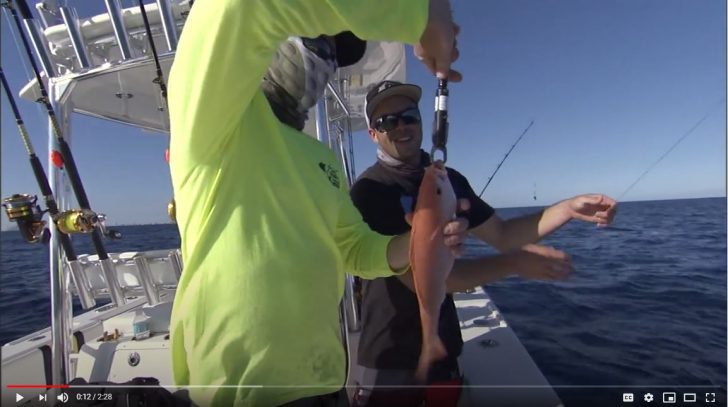
Effective July 15, 2020, new gear requirements for the Snapper-Grouper Fishery of the South Atlantic Region begin. Here’s the summary of the changes:
- Descending devices are required to be on board and readily available for use on commercial, for-hire, and private recreational vessels while fishing for or possessing snapper-grouper species;
- The use of non-offset, non-stainless steel circle hooks are required when fishing for snapper-grouper species with hook-and-line gear and natural baits north of 28º north latitude;
- All hooks are required to be non-stainless steel when fishing for snapper-grouper species with hook-and-line gear and natural baits south of 28º north latitude; and
- Powerheads will be allowed in federal waters off South Carolina.
FREQUENTLY ASKED QUESTIONS (FAQs)
Why are changes being made to snapper-grouper fishing gear requirements?
- Commercial and recreational fishermen have expressed concern about regulations that result in released fish that do not survive.
- Some released fish die due to foul hooking (hooking the fish in the stomach or throat), injuries caused by barotrauma (injury due to expansion of gas when reeled up from depth), handling damage, stress from the fishing process, and predation.
- To improve the survivorship of released fish, the South Atlantic Fishery Management Council considered measures that would encourage the use of best fishing practices that aim to minimize the impact of capture.
- Fishermen have also expressed concern regarding inequitable access for the dive component of the snapper-grouper fishery. To allow for more consistent regulations, the final rule will remove the powerhead prohibition in federal waters off South Carolina.
What constitutes an allowable descending device?
- Descending device means an instrument to which is attached a minimum of a 16 ounce weight and a length of line that will release the fish at the depth from which the fish was caught or a minimum of 60 feet.
- The descending device attaches to the fish’s mouth or is a container that will hold the fish. The device MUST be capable of releasing the fish automatically, by the actions of the operator of the device, or by allowing the fish to escape on its own.
- Since minimizing surface time is critical to increasing survival, descending devices shall be readily available for use while engaged in fishing.
- Examples of descending devices that meet the requirements can be found in Regulatory Amendment 29 and at the links listed below:
- o Weighted Hooks: https://www.youtube.com/watch?v=AT9K-zyVpB4
- o Lip Clamp Devices: https://www.youtube.com/watch?v=ZqBEPBdbqJg
- o Box Type Devices: https://www.youtube.com/watch?v=oaXpBMY0_rM
When and how should descending devices be used?
- It is the intent of the South Atlantic Fishery Management Council that descending devices only be used when a fish may be experiencing barotrauma (e.g., caught in deep water, protruding stomach, etc.).
- This final rule does not prohibit the use of venting tools for those individuals that know how to use them properly (e.g., trained crew on charter vessels or headboats).
What are the new hook requirements?
- Currently, non-stainless steel circle hooks are required to be used when fishing for snapper-grouper species with hook-and-line gear and natural baits north of 28º north latitude, which is a line running east to west approximately 25 miles south of Cape Canaveral, Florida.
- The final rule requires the use of non-offset, non-stainless steel circle hooks when fishing for snapper-grouper species with hook-and-line gear and natural baits north of 28º north latitude. Non-offset circle hooks can reduce the occurrence of hooking-related mortality (when compared to offset circle hooks and J-hooks) and can improve survivorship of released fish.
- This final rule also requires the use of non-stainless steel hooks when fishing for snapper-grouper species with hook-and-line gear and natural baits south of 28º north latitude. All hooks, regardless of type, will need to be constructed of non-stainless steel. Non-stainless steel hooks degrade faster than stainless steel hooks, so fish that are released with an embedded hook would likely have a greater chance of survival through their use.
NOTE: Regulatory Amendment 29 may be found online at the NOAA Fisheries Southeast Regional Office Website at https://www.fisheries.noaa.gov/action/regulatory-amendment-29-gear-requirements-south-atlantic-snapper-grouper-species.